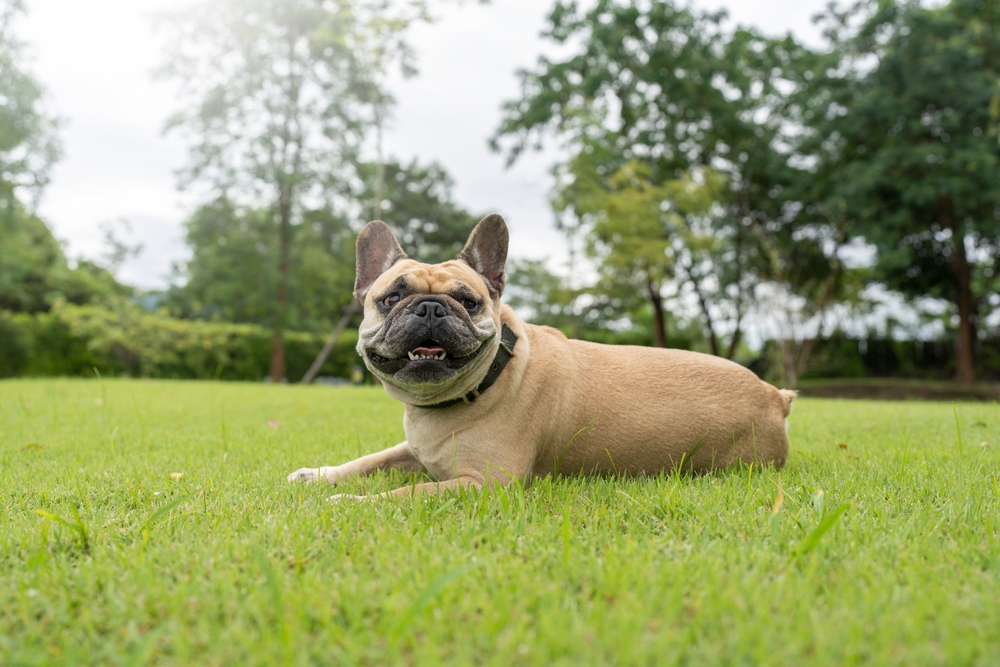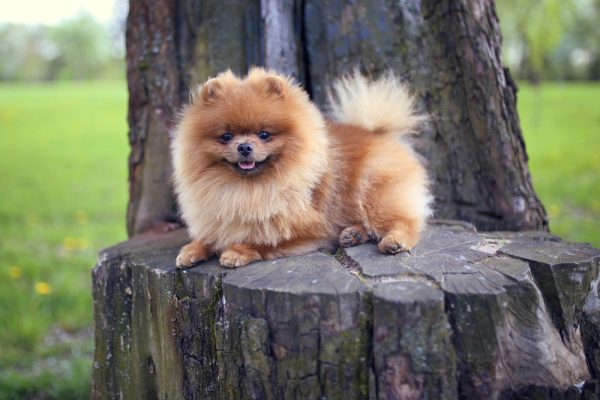Dogs are known for their unconditional love and loyalty, but some breeds are also known for their slobbery kisses and puddles of drool left behind after naptime. Although nearly every dog drools, some breeds drool more than others. These breeds always seem to have saliva around their mouth, ready to drip out at any moment. Not only do they leave hair around your home, but plenty of drool, too.
Keep reading to discover which dog breeds drool the most and some interesting facts about them.

How Are Dogs Breeds That Drool the Most Classified?
Dog breeds that drool the most are classified by their natural tendency to drool profusely. These breeds drool a lot without any other reason other than their anatomy. Brachycephalic dog breeds seem to be the most prolific droolers because of their facial structure.
They have flat snouts with numerous folds and usually cannot close their mouths completely. This allows saliva to easily accumulate in the folds and drip out. Furthermore, some brachycephalic breeds have breathing difficulties and breathe open-mouthed, making it easier for them to drool.
However, brachycephalic dog breeds are not the only breeds with a tendency to drool.

The 11 Dog Breeds That Drool the Most
1. English Bulldog

| Origin: | United Kingdom |
| Lifespan: | 8 to 10 years |
| Height: | 14 to 15 inches |
The English Bulldog is a stocky and well-muscled breed from the United Kingdom. They have a sweet demeanor and make great family pets with children and other calm dogs. English Bulldogs are not an energetic breed and enjoy a relaxed lifestyle composed of long naps and mild exercise.
As a brachycephalic breed, English Bulldogs are heavy droolers because of the way their faces are shaped. Their snouts are flat and wrinkly, and the corners of their mouths hang down making it difficult for them to close their mouths. The rest of their bodies are also wrinkled with deep folds that give them an adorable appearance.
2. Bullmastiff

| Origin: | United Kingdom |
| Lifespan: | 7 to 9 years |
| Height: | 24 to 27 inches |
Bullmastiffs are large dogs originally developed by gamekeepers to be loyal guard dogs. This breed is very muscular and can easily weigh up to 130 pounds. Bullmastiffs make excellent guard dogs with their protective temperaments and are very loving towards their family. They were developed by crossing English Bulldogs and Mastiffs to other breeds known to drool a lot.
This breed tends to drool a lot because of their facial structure. Their lips hang down on either side of their short muzzles, and they cannot close their mouths completely, causing them to drool.
3. Basset Hound

| Origin: | France |
| Lifespan: | 8 to 12 years |
| Height: | Up to 15 inches |
Basset Hounds are hunting dogs known for their incredible sense of smell. These short-legged canines have a sense of smell second to the bloodhound and put their nose to use when tracking and hunting small game. Basset Hounds are instantly recognized by their small stature and long, floppy ears. Furthermore, they are known to drool a lot despite not being a brachycephalic breed because of their overhanging lips.
Basset Hounds seem to leave puddles of drool after a good nap or when they are hot.
4. Great Dane

| Origin: | Germany |
| Lifespan: | 7 to 10 years |
| Height: | 28 to 32 inches |
Great Danes are one of the tallest dog breeds in the world, second to the Irish Wolfhound. They were developed to guard country estates and to hunt boars. However, they were also popular for sport and companionship purposes for royalty. Great Danes are often described as “gentle giants” because of their gentle temperaments and large size. The average Great Dane can easily stand at 28 to 32 inches tall and weigh up to 175 pounds.
These gentle giants are excessive droolers because of their protruding lips. You can expect to clean drool off your walls and floors, usually in higher places than smaller breeds.
5. Saint Bernard

| Origin: | Switzerland |
| Lifespan: | 8 to 10 years |
| Height: | 26 to 30 inches |
Saint Bernards are giant, rugged dogs trained to be search and rescue dogs in the Swiss Alps. They have thick coats and large heads with overhanging lips that make them excessive droolers. Saint Bernards have a highly keen sense of smell which allows them to locate bodies under 20 feet of snow. These brave canines have made loyal companions and devoted rescue dogs for centuries.
Furthermore, they have a unique, deep howl that makes them easy to locate.
6. Boxer

| Origin: | Germany |
| Lifespan: | 10 to 12 inches |
| Height: | 21 to 25 inches |
Boxers are Mastiff-type dogs from Germany known for their distinctive brachycephalic faces with a prominent underbite. Due to their facial features, Boxers are excessive droolers. They are incredibly playful, affectionate, and intelligent, with a protective side that can make them good watchdogs.
This breed is usually social and gets along well with other people and pets, ensuring they have been properly socialized from a young age.
7. Cane Corso

| Origin: | Italy |
| Lifespan: | 9 to 12 years |
| Height: | 23 to 27.5 inches |
Cane Corso are types of Italian Mastiffs originally developed to hunt large game. Nowadays, Cane Corsi are kept as pets or as guard dogs. This breed grows relatively large and can weigh over a hundred pounds. Cane Corsi have distinctive features, with a sturdy muscular body and squared head. They are a brachycephalic breed, which is why they drool excessively.
Ancestors of the modern Cane Corso have been around for centuries since their development in ancient Greece.
8. French Bulldog

| Origin: | France |
| Lifespan: | 10 to 12 years |
| Height: | 11 to 12 inches |
French Bulldogs or Frenchie are small, brachycephalic dogs from France. They have a distinctive appearance with a compact size, triangular ears, and flat snouts. French Bulldogs have had a steady ranking as one of the top five most popular dog breeds in the United States for several years. They make great companions for families with children and other pets, thanks to their friendly temperaments.
As with most brachycephalic breeds, French Bulldogs drool a lot more than other breeds. They may suffer from brachycephalic obstructive airway syndrome that could make them drool if they breathe open-mouthed. The amount they drool is usually less noticeable because of their small size.
9. Tibetan Mastiff

| Origin: | Central Asia |
| Lifespan: | 10 to 12 years |
| Height: | 24 to 26 inches |
Tibetan Mastiffs are large and powerful dogs with a thick coat that resembles a lion’s mane. They were originally bred in the Himalayas to be guard dogs. They protected flocks of sheep and Buddhist monasteries and monks from large predators. Their thick coats and muscular build kept them protected in the harsh Himalayan conditions.
Tibetan Mastiffs are known to drool a lot and often leave wet spots behind on furniture.
10. Pug

| Origin: | China |
| Lifespan: | 12 to 15 years |
| Height: | 10 to 13 inches |
Pugs are a small brachycephalic breed with wrinkled features, flattened muzzles, and stocky bodies. They originate from China where they were bred to be companions for wealthy Chinese emperors and royal families. They are believed to be an ancient dog breed, with an existence tracing back to 400 B.C. Pugs are highly affectionate and playful dogs that form close bonds with their family.
They are best known for their slobbery kisses and tendency to drool because of their flat and wrinkled snouts.
11. Bloodhound

| Origin: | Belgium |
| Lifespan: | 10 to 12 years |
| Height: | 23 to 27 inches |
The Bloodhound is a large scent hound bred to hunt various game. They have the best sense of smell out of every other dog breed, which is why they make excellent trackers and hunters. Bloodhounds have long, droopy ears and jowls that make them heavy droolers. They seem to drool more when they are excited, like when they are tracking something.
Despite their scary-sounding name, Bloodhounds are loving and affectionate dogs that make great canine companions. They are just as eager to play and bond with their owners as they are to hunt.

When to Be Concerned
Dogs drool for various reasons, such as temperature regulation, allergies, poisoning, dental problems, and certain illnesses. Despite some breeds having a genetic predisposition to drool more frequently, it is concerning for dogs to suddenly start drooling and acting abnormally. If your dog is showing signs of excessive salivation along with other worrisome signs, don’t hesitate to contact a veterinarian.
Did you know you can speak to a veterinarian without having to travel? Just head over to PangoVet. It's our online service where you can talk to a vet online and get the advice you need for your pet — all at an affordable price!


Conclusion
Although dog breeds of any size can drool a lot, it is commonly seen in medium to large breeds. Bulldogs and Mastiff-type dogs are the main breeds known to drool the most because of their brachycephalic features. Bloodhounds and Great Danes drool more than most dog breeds because of their protruding lips despite not having flattened snouts.
It’s normal for dogs to drool, and some drool more because of their genetics. However, there are instances where drooling is not normal and is considered a medical emergency, such as poisoning.
Featured Image Credit: GoDog Photo, Shutterstock



















